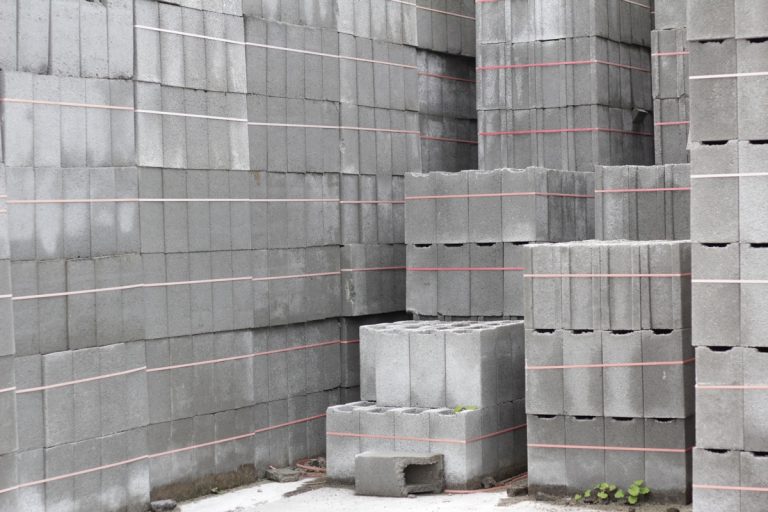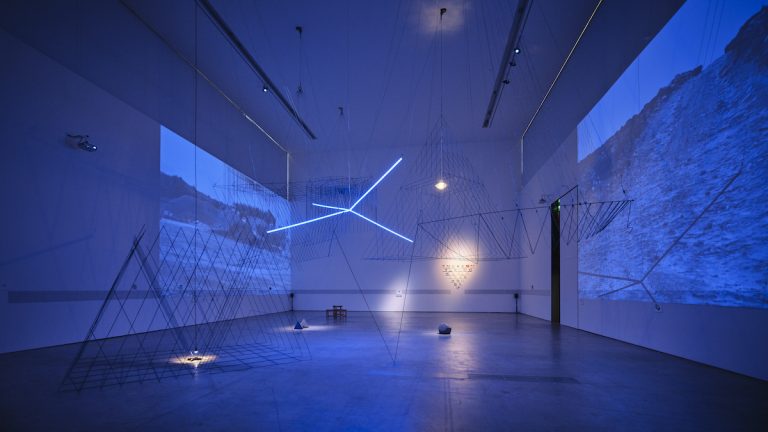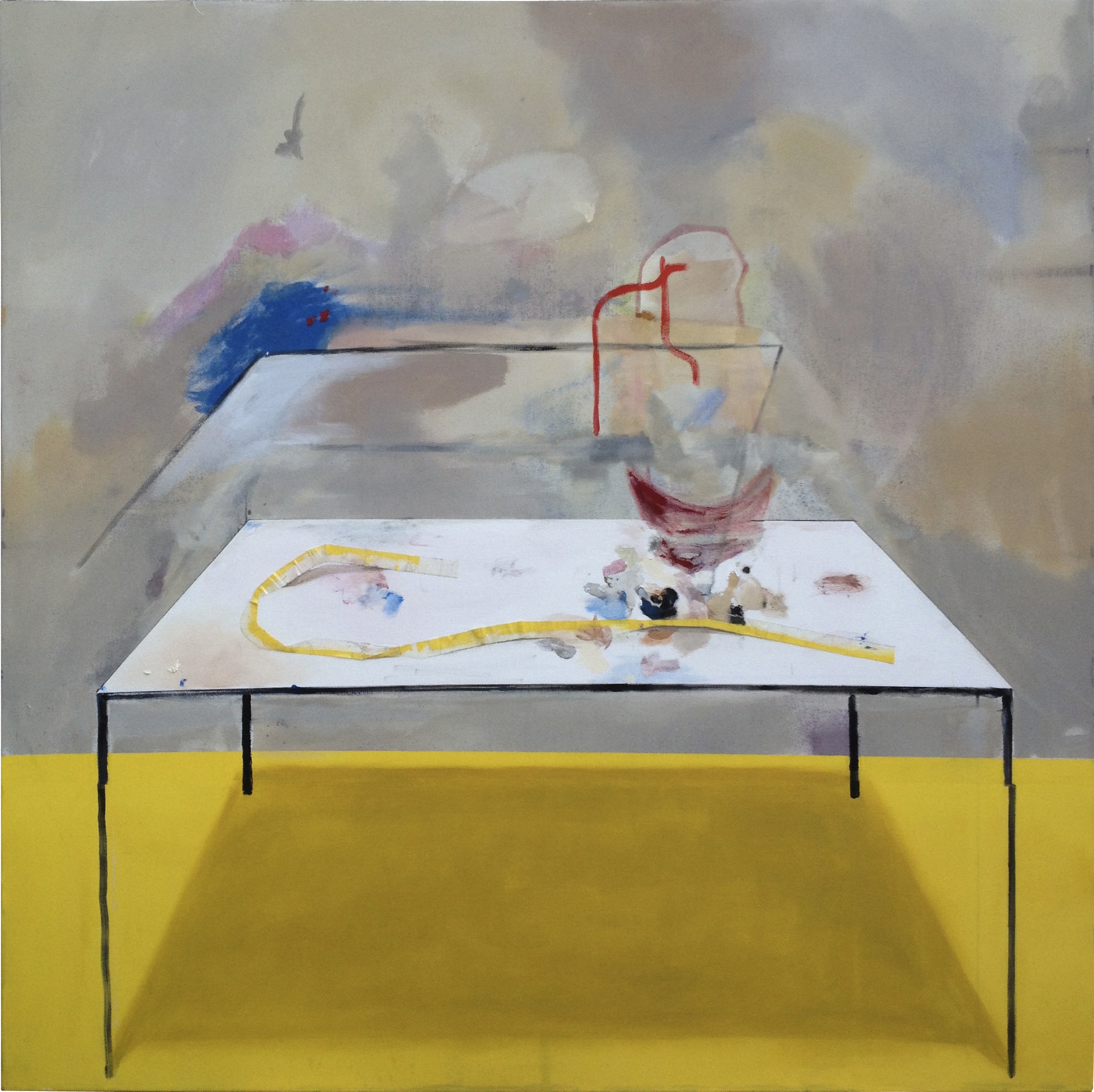The joint occasion of this exhibition and book, In an Open Room, similarly, but not identically titled, offers a timely summation – if such a thing were possible – of an oeuvre as profound as it is beautiful, hovering over a period of recent Irish art history like a beneficent, if demanding cloud. William McKeown’s work is moving, no doubt, though its register of emotion is discreet, and complicated by an entanglement of the personal and the objective, an austerity of form that is paradoxically open-armed. Naturally intimate, a book is a good vehicle for McKeown’s practice since it obliges you to turn the pages and turning – as the measure of days – is his work’s centre of gravity, the weight upon which its lightness depends. The comprehensive volume, published by Kerlin Gallery, and beautifully designed and produced by Tony Waddingham, includes texts by Caoimhín Mac Giolla Léith, Isabel Nolan, Declan Long, and John Hutchinson, along with a short essay by McKeown himself, written to accompany The Waiting Room, a ‘ready-made’ presented at The Hugh Lane Gallery in 2011, and one of his final works.1 His words also appear as quotations within the other writers’ contributions – and I’m using their wise commentaries to anchor my own thoughts and recollections here – further reminding us of McKeown’s singular voice and how closely aligned his making and thinking were.
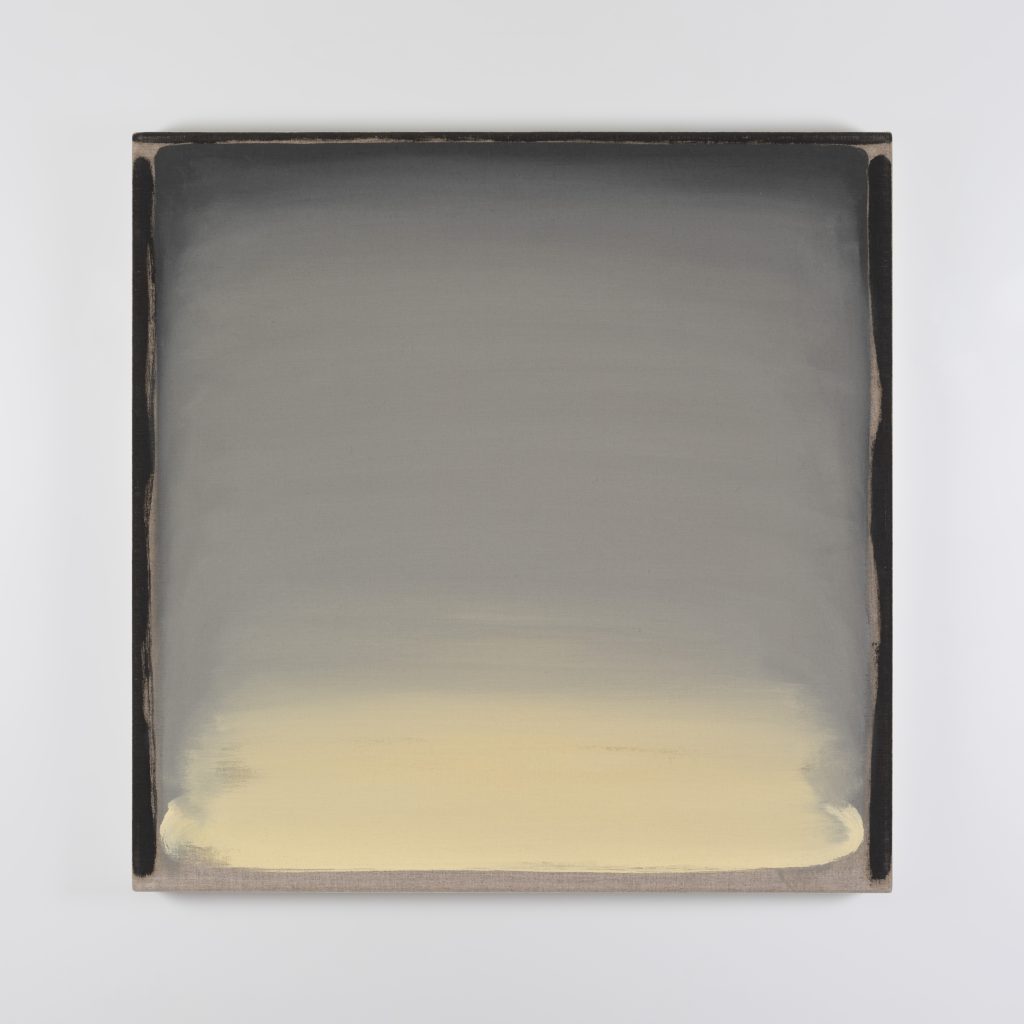
William McKeown, Untitled, 2009–11
Oil on linen, 45.5 × 45.5 cm
Courtesy of the William McKeown Estate and Kerlin Gallery
If the book is expansive, the exhibition it accompanies is taut, consisting mostly of small paintings and framed works on paper, interspersed along the Kerlin’s north- and south-facing walls. A large painting greets you as you arrive at the top of the stairs, with an all-black painting, a sombre coda, at the opposite end. Characteristic of the artist’s later work, the large painting, Untitled, and dated 2009–11, has brown oil paint brushed in narrow, irregular bands around the four sides of the linen support. These areas, subtly darker at the base and warmer at the top and sides, frame an application of paint that seems gently dispersed from the centre, occupying the surface like an incoming tide. Predominantly grey, this interior colour is warmer at the bottom, giving way to silvery hues as it percolates upwards. The transitions are all but immeasurable, except towards the border areas where different paint layers are visible, the upper ones progressively lighter. The progression, otherwise, is towards darkness, at least if you follow the work anti-clockwise around the room, as I did, ending at a medium-sized, untitled and undated painting of the deepest hue, a Payne’s grey depth surrounded by an irregular frame of equally dark, but slightly warmer tones. Peering closely at the surface of this painting revealed the linen ground as a scrubbed dimension, as though a former light had been scoured clean.
With the exception of Mac Giolla Léith, who has written specifically for the new book, the texts are historical, first appearing on the occasion of different exhibitions over the years. Isabel Nolan – writing in 2002 for The Sky Begins at Our Feet, Ormeau Baths Gallery, Belfast – bolsters her own insights by quoting McKeown at regular intervals, beginning with this:
The sun doesn’t come up in the morning, the sun doesn’t go anywhere, we go around. Yet there’s a feeling not only that the sun comes up, but that it comes up for you. It is not symbolic, it has nothing to do with the Sublime, it has nothing to do with transcendence, it’s simply a feeling. 2
And feeling, for McKeown, was everything. Though an artist of penetrating, and sometimes unforgiving intelligence, it was authenticity of feeling that governed his artistic choices. Once, upon seeing his pale canvases hung on a grey wall, I remarked how the grey was slightly off-putting, lending his off-white paintings an exaggerated glow. ‘I made the paintings,’ he insisted, ‘I didn’t paint the wall.’ Though chastened, it reminded me that admiring an artist’s work included the responsibility of thinking about it carefully. You might like it, but it wouldn’t be staying in place for you, you’d have to follow it wherever it went.
When I first saw his delicate flower drawings, their composition and rendering seemed deliberately naive. It took me a while to warm to them. Encountering his first purpose-built room – at the aforementioned Ormeau Baths show – I was sceptical of a wooden container whose bold interior colour and harsh strip-lighting seemed to contradict everything he had previously done, everything he had said about the morning light and the gradual appearance of the sun. With small works placed inside the free-standing structure, I thought the artist was recreating his studio space within the gallery, or perhaps had made a model for the exhibition – though it was a rather large model and had somehow become the exhibit itself. Maybe it was the set of a kitchen-sink drama, a soap-opera setting for an angry young man. Of course, it was none of those, but how could such obvious artifice – however carefully executed – compete with the natural expanse of the sky?
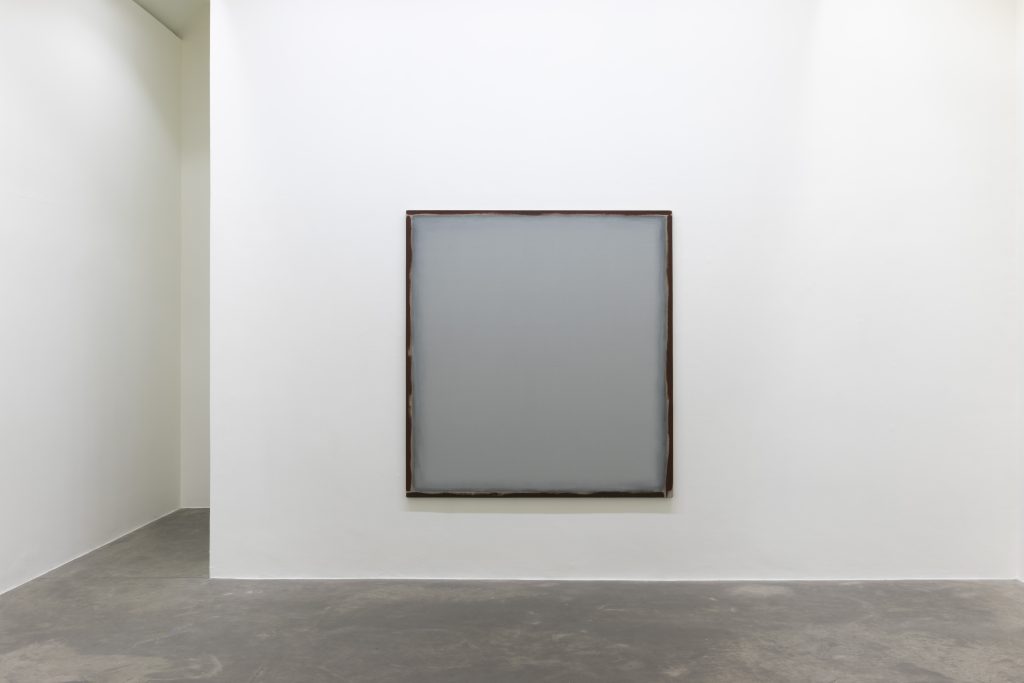
William McKeown, installation view, Kerlin Gallery, 2023
Courtesy of the William McKeown Estate and Kerlin Gallery
McKeown’s work helped me understand that to be interested in expansiveness was to be interested in boundaries too; to understand belonging, it was necessary to feel apart. An artist like James Turrell – whose Irish Sky Garden (1990) can be seen in the Liss Ard Estate in Skibbereen – makes this dichotomy most explicit with installations like Meeting at MoMA PS1 in New York (1980–86/2016), or the various light chambers, portals, and tunnels of the Roden Crater in Northern Arizona (1977–ongoing). With elaborate arrangements for viewing the sky, Turrell makes an entire building, an entire volcanic landscape a frame, his subject more visible by its limits. Lacking the hubris of Turrell, McKeown’s frameworks are more domestic. Punctured by open doorways and window frames, his intimate, built spaces have the proportions of a family room, a place typically referred to – with unconscious drama – as the living room.3 Ironically, perhaps, this room – where rules are often cemented – can sometimes be repressive, a place removed from a wider sense of life. Defined by enclosure, a room is also like a body, an interior from which we encounter the outside world. McKeown, again quoted by Nolan, makes the vitality of such boundaries clear:
If the room is the body then the window is the point of desire for connection to outside, or, for something or someone from outside to come inside. The window is the point where we are most aware of our containment because it evokes the memory of when we were not separate.4
For a while, the artist was in the habit of hanging his paintings unusually high, requiring our gaze to travel upwards. Though a move comparable to religious iconography – saints looking up at the body of Jesus – and despite his fondness for titles like Hope and Forever, there is no spiritual valance in McKeown’s paintings, no outside meaning. Their miracle lies within their tangible selves. In his text, ‘The Frontiers of Nothingness’, first appearing alongside McKeown’s 2008 exhibition at the Irish Museum of Modern Art (IMMA), Declan Long evokes Simon Critchley to reinforce this idea. For Critchley – writing about Wallace Stevens – any sense of elevation prompted by art must be ‘free of mysticism … free from any purported intellectual intuition of a transcendent reality’.5 Any beyond we might aspire to, is not beyond this world.
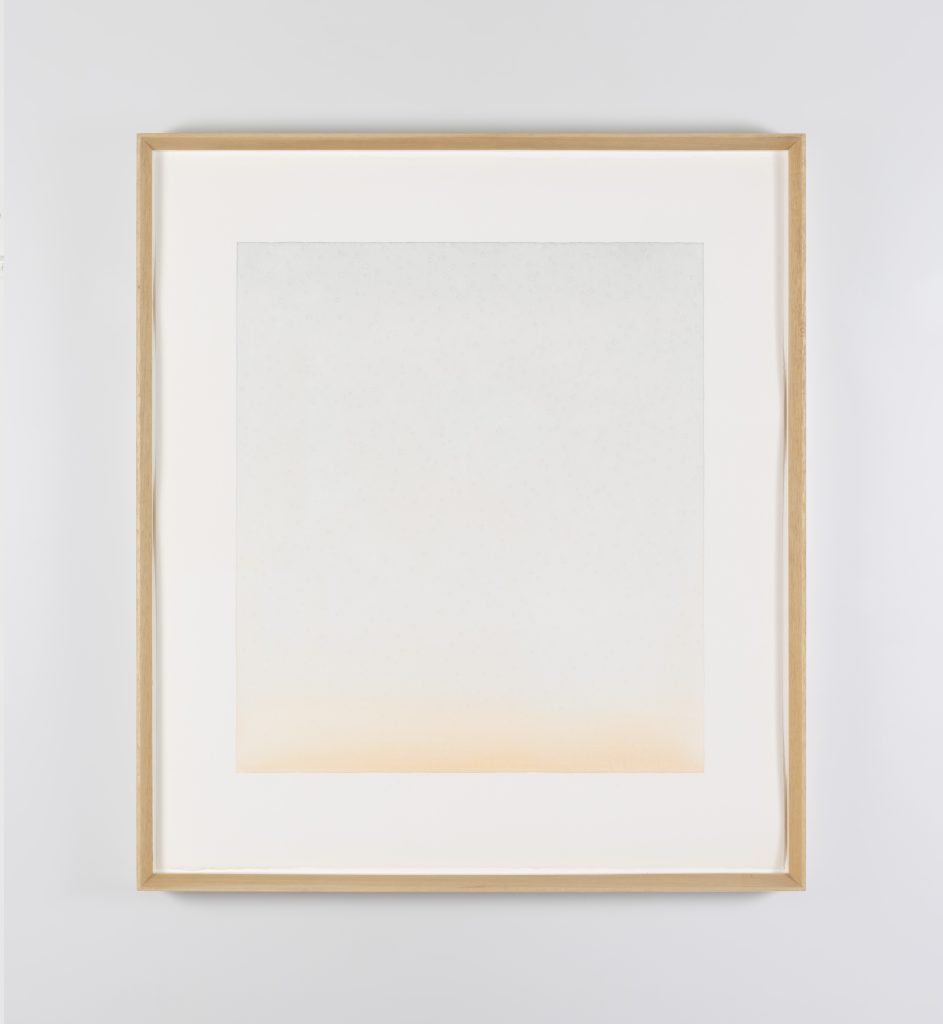
William McKeown, Freedom Drawing – Starlings #3, 2006
Watercolour on paper, 61 × 54 cm
Courtesy of the William McKeown Estate and Kerlin Gallery
Long also refers to the filmmakers Andrei Tarkovsky and Chris Marker. The latter’s essay film Sans Soleil (1983) was an important touchstone for McKeown, and the former’s autobiographical feature, Mirror (1975), equally so.6 Both films deal with memory, capturing moments of connection and happiness within their dense reassemblies of time. Of the seven framed watercolours in the exhibition, one of them is titled Mirror Drawing (2003), its oval shape within the rectangle of white paper unique, as far as I know, in the artist’s oeuvre. The colour of this shape defies any real notion of colour, its hue so light and indescribable. ‘I try to create a painting that feels concave,’ he once stated, ‘and this concave space is a mirror of the space I find in nature.’7 Though with no sign of painterly gesture, his watercolours – as technically brilliant as they are understated – retain an air of the somatic, imprinting the paper like breath. About light, they are also vulnerable to it, like morning vampires. Also surprising, a group of three watercolours, each called Freedom Drawing – Starlings (2006), have tiny droplets on the surface like fallen rain, though given their titles, this could also be the passage of birds. McKeown often referred to birds, and the show includes a small oil painting on linen called The Seagulls (2008).8 In the book, an earlier and much larger work, The Corncrake (1996), appears in an installation view from the 1997 ‘Glen Dimplex Artists Award’, at IMMA.9 If it wasn’t for the shadows cast by the thin stretcher, the painting might be indiscernible from the wall behind, a wall, or so legend has it, given a pristine resurfacing to accommodate its discreet charge.
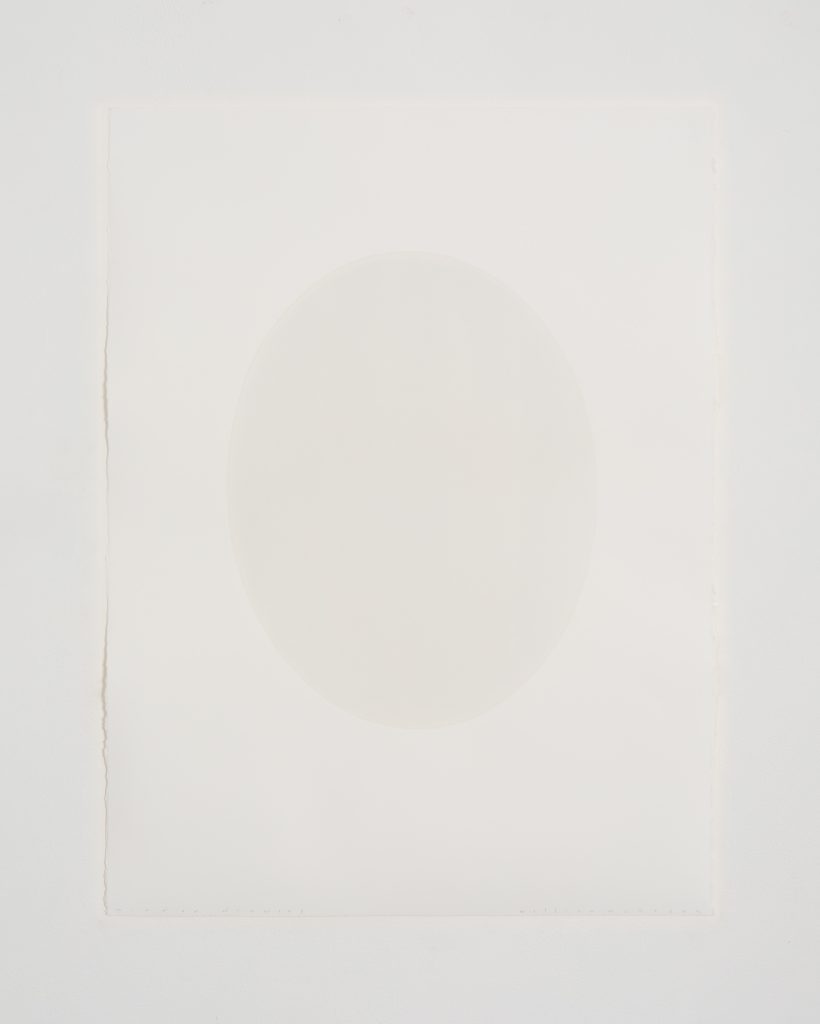
William McKeown, Mirror Drawing, 2003
Watercolour on paper, 60.5 × 19.5 cm (framed)
Courtesy of the William McKeown Estate and Kerlin Gallery
The dark borders of the later paintings amplify their luminosity but also serve as reminders of their physical limitations. However open, as objects they retain their self-possession, their degree of reserve. In setting out the distinct phases of McKeown’s too-short career, Mac Giolla Léith reminds us how forthright the artist was, and, in his story of a repeatedly amended picture frame, how fastidious. He was also open to the unexpected. In his 2010 exhibition with Dorothy Cross, a two-hander at Kerlin Gallery called Pool, Mac Giolla Léith tells how McKeown’s painting Ocean (2009), with its characteristic dark areas on three sides, was upended at the last minute, turning the portal-like composition into a vessel.10 I remember seeing it and thinking of Roni Horn’s glass sculptures, their cast forms neither solid nor liquid, brimming with slow-moving atoms. Hung unusually low to the ground, the large painting seemed heavy to me, as though weighted with light.
In the John Huston film, The Misfits (1961), starring Clark Gable, Marilyn Monroe, and Montgomery Clift, the main characters, after a long drive, reach the Nevada desert as though arriving on the moon.11 ‘How quiet it is,’ Rosalyn says (played by Monroe), ‘you can hear your skin against your clothes.’ A sense of freedom, of being in a place that feels unbounded, is explored and condensed in McKeown’s smaller works, the better to arrive fully fledged in the larger. His small paintings are the truck the stars arrive in, his larger ones are what they see. In his text for In an Open Room, McKeown’s 2001 Douglas Hyde Gallery exhibition – that title reprised for the book – John Hutchinson refers to The Misfits, evoking ideas of home and the wide-open spaces of landscape and sky. These ideas can seem opposite, containing notions of inside and outside that are sharply defined. In the catalogue for A Dream of Discipline and Other Works (2006), a group exhibition also at the Douglas Hyde Gallery,McKeown remembers a time with his father, a moment when divisions disappeared:
As a young boy, being beside him once as he shook hay with a pitchfork in the low back field, we heard the cuckoo’s call. Looking up together in the direction of its longing, I saw nothing and an endless blue sky. It suddenly appeared to me that everything I was seeing, the golden field, the light from the sky, my luminous father … were all inside of me.12
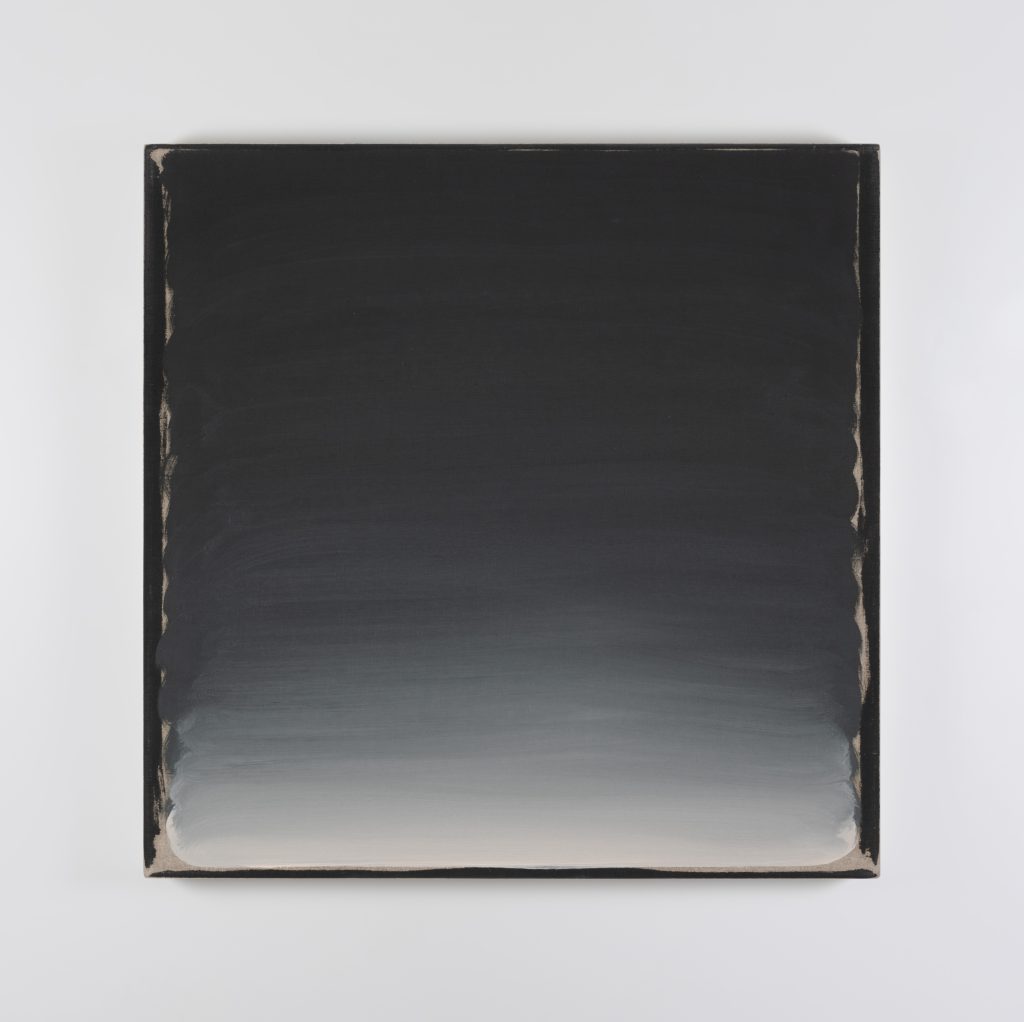
William McKeown, Starlings, 2008
Oil on linen, 40.5 × 40.5 cm
Courtesy of the William McKeown Estate and Kerlin Gallery
McKeown’s 2001 exhibition included watercolour drawings of night skies. Perhaps influenced by Vija Celmins – an artist he admired – these works consisted of grey expanses dotted with tiny, uncovered areas of white paper.13 With the uncovered ground the source of light, the small sheets stood in for a wider universe. Hutchinson recalls The Misfits final scene, when, driving into the night, Rosalyn asks Gay (played by Gable): ‘How do you find your way back in the dark?’ ‘Just head for that big star straight on,’ he says, ‘the highway is under it. It will take us straight home.’14 The film ends with a shot of the night sky, but I’m also reminded of an earlier scene, when Rosalyn is being shown through an unfinished house. ‘Here’s a picture window, take a look at this view,’ enthuses her guide, quickly wiping a grubby pane. When the back door is opened briefly, she steals a glimpse of the outside. ‘Gee,’ she says, ‘it goes on forever.’
John Graham is an artist, writer, and lecturer based in Dublin. He is currently on a career break from teaching to focus on his studio practice.
Notes
1 William McKeown, The Waiting Room, from William McKeown: In an Open Room (Dublin: Kerlin Gallery, 2023), 224–29. The artist describes the oval-shaped room – otherwise known as Gallery 8 – as a ‘Willie McKeown ready-made’. Painted for the occasion in Farrow & Ball’s Tanner’s Brown, the room was left empty except for its distinctive, built-in wooden benches. The only light came from the translucent skylight, and whatever spilled in from the adjacent Sculpture Hall. McKeown’s text finishes with the words, ‘Here comes the Sun’, a reference to George Harrison, and a song written on a rare day off from the business of Apple Records. A holiday song.
2 McKeown, quoted by Isabel Nolan, The Sky Begins at Our Feet, in William McKeown: In an Open Room, 31.
3 The book cover shows The Day Room (2004–10), a three-metre square, free-standing room presented in a two-person exhibition with works by Felix González-Torres. González-Torres, like McKeown, was adept at turning the seemingly ordinary into magic, a string of lightbulbs, wrapped sweets, an unmade bed. The exhibition, A Certain Distance, Endless Light, was curated by Gavin Delahunty for the Middlesbrough Institute of Modern Art (MIMA) in 2010.
4 McKeown, quoted by Isabel Nolan, in William McKeown: In an Open Room, 39.
5 Simon Critchley, quoted by Declan Long, The Frontiers of Nothingness, in ibid, 126. The quote is from Simon Critchley, Things Merely Are (London: Routledge, 2005), 55–57.
6 McKeown’s preferences weren’t always so highbrow. I tried to interest him in Vittorio De Sica’s Bicycle Thieves once, but he told me he’d grown weary of ‘art films’ and recommended the 1990’s sitcom Spaced instead.
7 Caroline Hancock, The Untold Want, from the book and group exhibition of the same name, curated by Caroline Hancock and Patrick T. Murphy (Dublin, Royal Hibernian Academy, 2015), 22.
8 In the show, there is also a small oil painting called Starlings and another called Raining, both from 2008.
9 In his launch-night remarks, Mac Giolla Léith recalled how this prestigious award became known as the ‘Irish Turner Prize’, much to the dismay of IMMA and the prize sponsors.
10 Caoimhín Mac Giolla Léith, The Unfurling of a Space in the Heart, in William McKeown: In an Open Room, 12.
11 The screenplay was written by Marilyn Monroe’s husband, Arthur Miller. The playwright gave all the main characters great lines, including Monroe’s, ‘If I’m going to be alone, I want to be by myself.’ The film was also extraordinary in hosting the final screen performances of both Monroe and Gable, adding a posthumous pallor to a story already about endings.
12 Kathy Prendergast/Dorothy Cross/William McKeown: A Dream of Discipline (and Other Works) (Dublin: Douglas Hyde Gallery, 2006). The exhibition is named for a work by Prendergast, consisting of a white mattress perched on a mound of white stones. A Dream of Discipline (1989, remade 2006) acts as a central motif around which the ‘other works’ – by Prendergast, Cross, and McKeown – are like satellites.
13 In 2004, Celmins’s showed small works on paper in The Paradise, a series of exhibitions curated by John Hutchinson at the Douglas Hyde Gallery. I still recall her etchings of spiders’ webs, somehow both plain and otherworldly.
14 John Hutchinson, Shells, from William McKeown: In an Open Room, 22.


